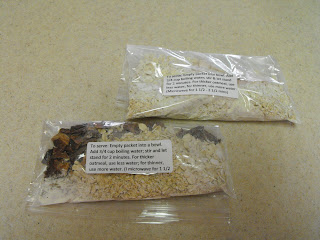When I was really young, we used to go visit my Great-Grandmother in Murray, UT. Every once in a while, a loud "pop" would be heard. It startled my sisters and I until we learned what it was. One of Grandma's homemade Rootbeer bottles' lids had popped off. She would make it in real soda bottles and would cap them. They looked like the type you would buy out of the machine to me.
Just as a reminder, one of our target items this week is Yeast. I discovered the following recipe from Dr. David Fankhauser's website. I love his site, he teaches anyone how to do so many things....like make Root Beer! The following recipe and steps are from his site.
You will need the following equipment:
- A clean 2 liter plastic soft drink bottle with cap. (Dr. Fankhauser does not recommend glass bottles because of the risk of explosive shards of glass),
- funnel,
- 1 cup measuring cup,
- 1/4 tsp measuring spoon,
- 1 Tbl measuring spoon.
Here is a list of ingredients:
- 1 cup table sugar,
- 1 Tablespoon of Root Beer Extract (He recommends Zatarains's, but I found another brand locally. We often make Dry Ice Rootbeer, and I just had this particular bottle in the cupboard).
- 1/4 teaspoon of Powdered Baker's yeast.
- Cold fresh water. (I found several discussions on-line that recommend that you use as little chlorinated water as possible as the chlorine reportedly can kill the yeast. So, I chose to use our water filter pitcher for the fresh water).
Pour in the sugar through the funnel.
Add your yeast via the funnel.
You can see the yeast on the sugar.
Shake the bottle and mix the yeast and the sugar. Swirl the mixture around in the bottle to create a small well or a concave surface in the mixture. This will receive the Extract.
Add the Root Beer Extract via the funnel.
You can see that most of the Extract is in the middle of the mixture.
Pour water over the spoon to get all the Extract off the spoon and use the water to clean the funnel to get all the yeast and sugar particles inside of the bottle. Fill the bottle and leave an inch of head space.
I found that I initially needed to shake the mixture as sugar settled into the bottom of the bottle. I had to go back about an hour later and do the same thing again. The directions state that you need leave the bottle at room-temperature for about 3-4 days. When the bottle feels "Rock hard", place it into the refrigerator to chill. Before serving (within 24 hours), crack the lid of the thoroughly chilled bottle to release some of the pressure.
Now, the LRH did research this, and found that some folks reported that their bottles did blow their top which left quite a mess to clean-up. I thought about putting it into the garage, but it is too cold right now to let the yeast activate. So, I am giving myself a "fail-safe" just in case.
I am enclosing the bottle inside of a garbage bag. That way, if something unforseen does occur, it will all be contained inside of the trash bag. Watch for the results of this project very soon!















































